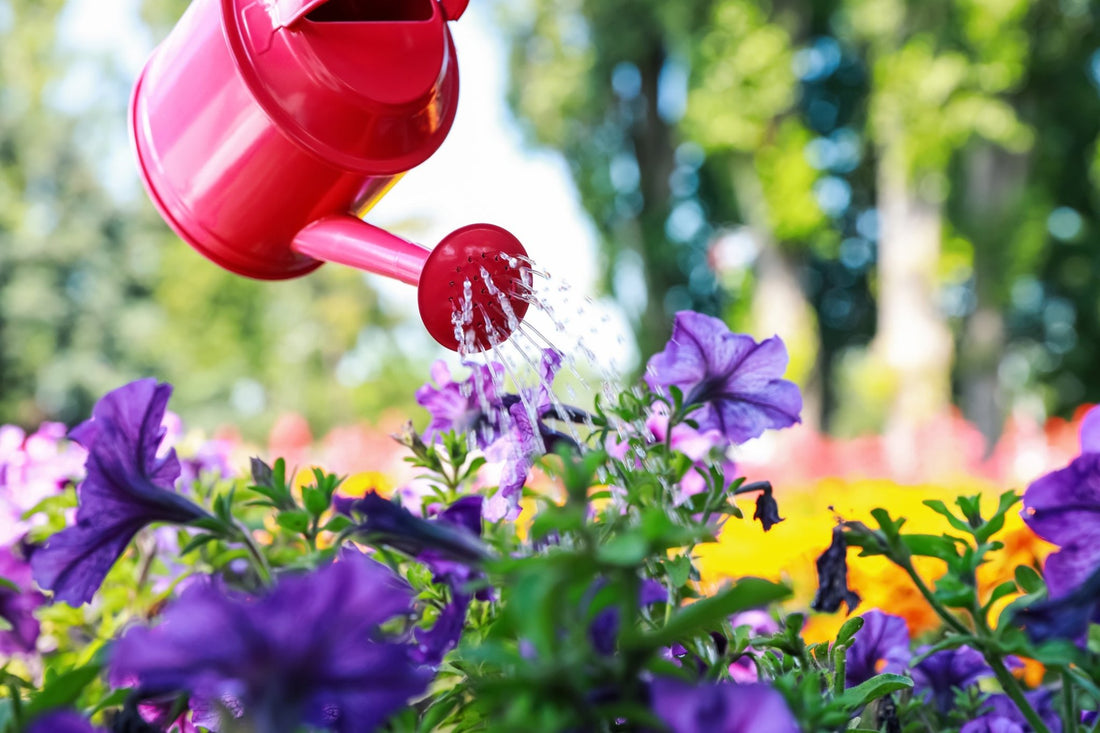Fertilizer Fundamentals - 411 on Fertilizer
Ah, fertilizer – that magic sprinkle or liquid gold that gives your plants the nutrients they crave. Whether you’re growing veggies, flowers, or just trying to revive your patchy lawn, fertilizer is your best friend. Let’s dive into what fertilizer is, the types available, and why your plants can’t get enough of it!
What Is Fertilizer?
In simple terms, fertilizer is plant food. It’s a mix of nutrients that help plants grow stronger, faster, and healthier. Think of it as a multivitamin for your garden. Whether you choose organic or synthetic, fertilizers boost your soil’s ability to nourish your plants.

Types of Fertilizer
Fertilizers fall into two main categories: organic and synthetic. Within each, you can choose between granular, water-soluble, and liquid forms. So, which do you pick? Let’s break it down:
Organic Fertilizer
Organic fertilizers are made from natural materials like compost, manure, and bone meal. They work more slowly than synthetic options but offer long-term benefits for your soil's health.
- Granular Organic: These are your slow-release fertilizers. Spread them around your plants, and as they break down over time, they release nutrients. Use granular organic fertilizers for vegetables, shrubs, and trees when you want a more hands-off approach.
- Water-Soluble Organic: These fertilizers dissolve in water and can be applied while watering your plants. They’re ideal for quick nutrient boosts but are still gentle on plants. Use them when your flowers or herbs need a pick-me-up.
- Liquid Organic: Think fish emulsion or seaweed fertilizer. You dilute these in water and spray them directly on your plants or soil. They act faster than granular but still offer all the goodness of organic nutrients. Perfect for container plants and hanging baskets that need regular feeding.

Synthetic Fertilizer
Synthetic fertilizers are made from chemicals and offer fast results. They’re the high-energy drinks of fertilizers, giving your plants a quick shot of nutrients.
- Granular Synthetic: These are your classic slow-release fertilizers. Like their organic counterpart, they release nutrients over time but tend to work faster. They’re great for your lawn and larger plants, like trees and shrubs, where a long-term feeding plan is ideal.
- Water-Soluble Synthetic: Just mix with water, and boom – instant plant food! Perfect for flower beds, annuals, and vegetables. This type of fertilizer gives an immediate nutrient boost but requires more frequent applications.
- Liquid Synthetic: These fertilizers are applied as a liquid and provide a fast-acting nutrient blast. They’re especially useful for plants that need quick recovery, like after a harsh frost or drought. Use them sparingly, though, as they can overwhelm your plants if overused.
When and What to Use Each Fertilizer On
- Granular (Organic or Synthetic): Ideal for long-term feeding. Apply it in the spring or fall to give your plants steady nutrition throughout the growing season. Use it on lawns, shrubs, trees, and garden beds.
- Water-Soluble (Organic or Synthetic): Great for a mid-season boost or when you notice your plants looking tired. Use on flowering plants, vegetables, and container plants.
- Liquid (Organic or Synthetic): If your plants need a fast-acting fix, liquid fertilizers are your go-to. Best for quick recovery in containers, raised beds, or when you’ve neglected to fertilize for a while.

Why Fertilize?
Fertilizing isn’t just about making your plants look pretty. It’s about providing essential nutrients that your soil may not naturally have. Fertilizers help with:
- Boosting plant growth: More leaves, flowers, and fruit!
- Improving plant health: Nutrients strengthen plants, helping them resist pests and diseases.
- Enhancing soil quality: Organic fertilizers, in particular, help improve soil structure, which leads to healthier roots and better water retention.
The Nutrients Your Plants Need: Macro and Micronutrients
Fertilizers contain a mix of macronutrients and micronutrients. Both are essential for plant health, but in different amounts.
- Macronutrients: These are the "big three" – Nitrogen (N), Phosphorus (P), and Potassium (K). Look for the N-P-K ratio on your fertilizer bag, which tells you the percentage of each nutrient.
- Nitrogen (N): Helps with leafy growth. It’s your go-to for lush lawns and leafy vegetables.
- Phosphorus (P): Essential for root development and flower production. Great for blooming plants and root crops.
- Potassium (K): Boosts overall plant health and resistance to disease. Crucial for fruiting plants like tomatoes and peppers.
- Micronutrients: Think of these as the little helpers. They include iron, manganese, zinc, copper, and more. Though needed in smaller amounts, they’re still vital for plant growth and preventing nutrient deficiencies.

Compost: The Unsung Hero of Fertilizers
Let’s not forget about compost – the ultimate organic fertilizer. It’s made from decomposed organic matter (think veggie scraps, leaves, and grass clippings) and is rich in all the nutrients your plants need. Compost not only adds nutrients but also improves soil structure, retains moisture, and encourages beneficial microorganisms. Plus, it’s free if you make it yourself! Use compost in your vegetable gardens, flower beds, or as a top dressing for your lawn.
So there you have it, In Keswick, our plants have a shorter growing season, so give them the best shot at success with the right fertilizer. Whether you go organic or synthetic, granular or liquid, feeding your plants is essential for a healthy, vibrant garden. And don’t forget – sometimes the best fertilizer is the one you make yourself, straight from your compost bin!
Happy gardening!
Shannon, the Garden Girl
Shannon, the Garden Girl, your go-to for all things green and growing! Today, she’s ready to show you the perfect technique for fertilizing your hedge. Think of it like feeding chickens – each plant needs the right amount of nutrients at the right time, delivered with care. Shannon's here to break it down step by step, so your hedge grows lush, healthy, and ready to strut its stuff all season long!




